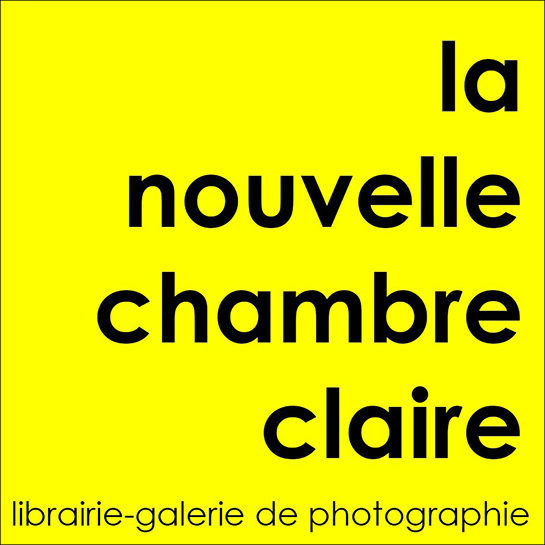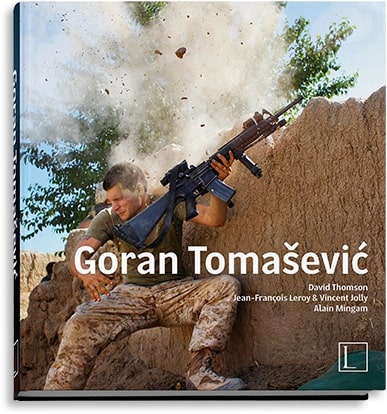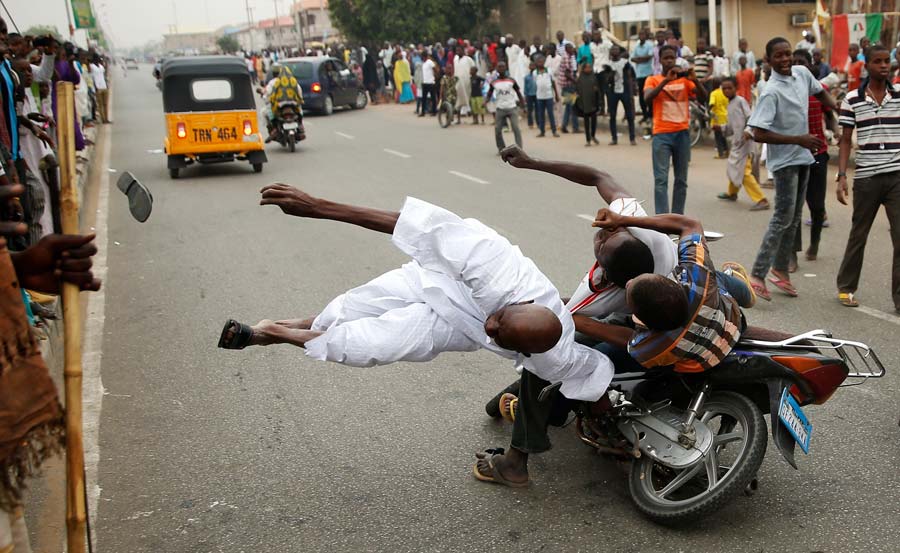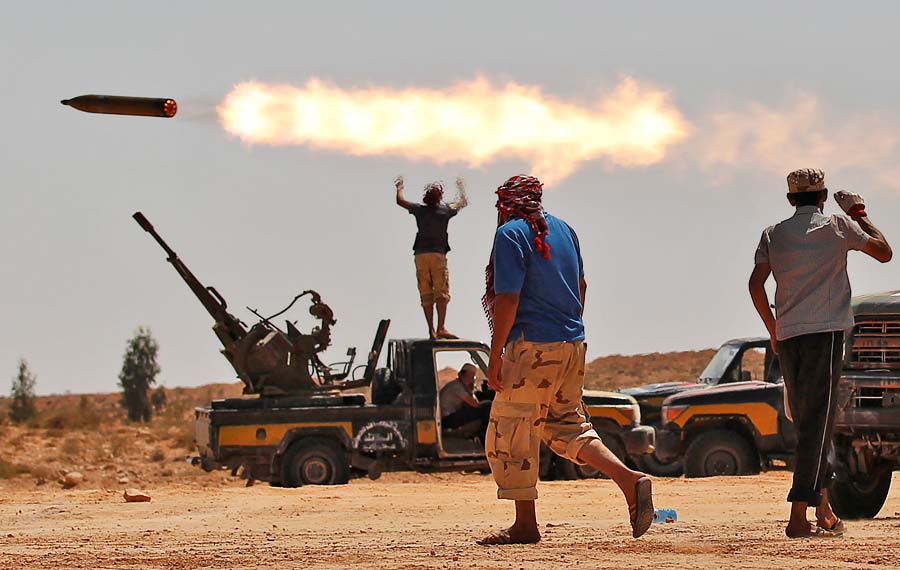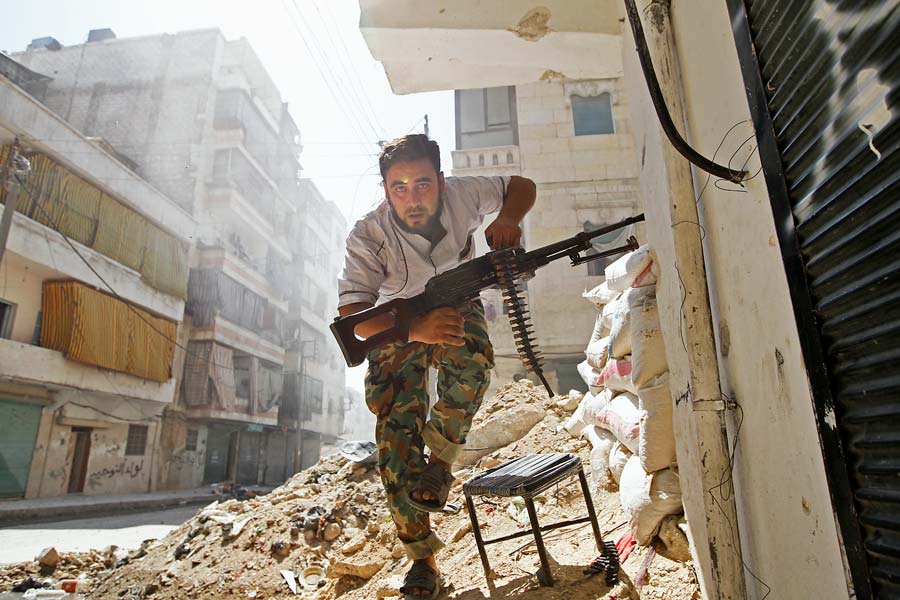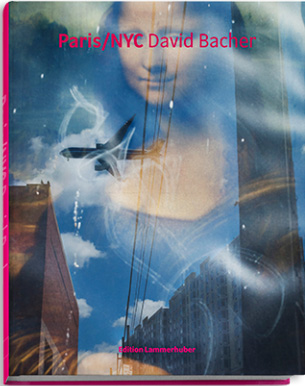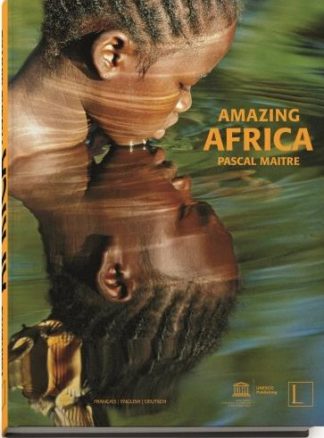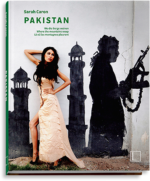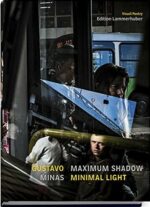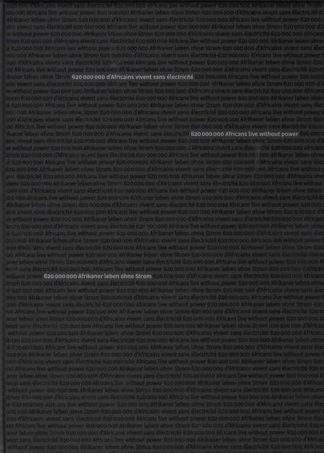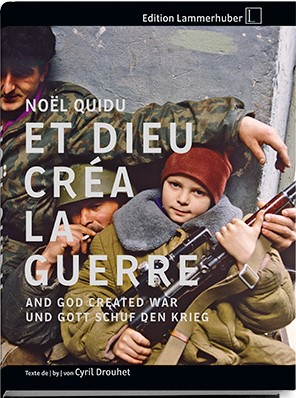Regardez l’homme pour découvrir le photographe. Son père vient de vendre un vélo et lui offre son premier appareil photo, un ancien FED 5V. Goran a 13 ans et ne sait pas encore que ce précurseur du Leica lui permettra de progresser rapidement, aidé par le petit ami de sa sœur aînée, photographe professionnel. Et transformera sa vie en une aventure permanente – parcourez les 444 pages de ce volume exceptionnel, une contribution majeure au grand voyage du photojournalisme et une histoire incontournable des 30 dernières années.
Sur les traces ou comme compagnon de James Nachtwey, il est aussi un digne héritier de Robert Capa, Larry Burrows, Don McCullins et est devenu l’un des plus grands professionnels de sa génération. À sa façon, il remonte à Mathew Brady qui, pendant la guerre de Sécession de 1861, voulait transmettre l’odeur de la mort aux foyers américains.
Goran Tomašević n’a jamais coupé ses origines serbes. Au contraire, alors qu’il était déjà fasciné par l’Afrique et le Moyen-Orient, il a commencé à couvrir la situation en Croatie et en Bosnie en 1991, répondant aux demandes de la presse locale, y compris le quotidien kosovar Pristina. Avec les enseignements et l’affection de son père et de son grand-père en tête, Tomašević s’est consacré avant tout à la crise profonde qui a fait rage entre les bombardements de l’OTAN et les manifestations anti-Milošević.
La qualité de ses reportages, la force de ses images lui ont permis de rejoindre la célèbre agence Reuters en 1996 pour devenir, au cours des 20 prochaines années, l’un des photographes les plus primés au monde. « Si vous voulez que les faits soient authentiques, vous devez être là où ils sont. Voilà le défi. Mais c’est plus difficile », dit-il dans une entrevue, « lorsque les histoires se produisent chez vous. C’est ce qui fait le plus mal ». Cette confession révèle l’une des raisons de son humanité, qui imprègne tous ses reportages, de Pristina à Kaboul, et toute sa photographie, déjà une œuvre expressive très significative dans le monde du photojournalisme. Les images de Goran Tomašević sont plus que jamais nécessaires pour reconnaître la vérité des faits et le respect dû à chaque spectateur, citoyens sans frontières de notre planète totalement numérisée. Alain Mingam, président du World Press Photo Contest 1994 et vice-président de Reporters sans frontières 2013-2015 ; texte de David Thomson, Jean-François Leroy & Vincent Jolly et Alain Mingam, photos en couleurs.
Look to the man to discover the photographer. His father has just sold a bike and offers him his first camera, an ancient FED 5V. Goran is 13 years old and does not yet know that this precursor to the Leica will allow him to make rapid progress, helped by his older sister’s boyfriend, a professional photographer. And will turn his life into a permanent adventure – set out across the 444 pages of this exceptional volume, a major contribution to the great journey of photojournalism and a must-see history of the past 30 years.
In the footsteps or as companion of James Nachtwey, he is also a worthy heir to Robert Capa, Larry Burrows, Don McCullins and has become one of the greatest professionals of his generation. In his very own way he goes back to Mathew Brady who, during the Civil War of 1861, wanted to convey the „smell of death“ to American homes.
Goran Tomašević never cut off his Serbian origins. On the contrary, although he was already fascinated by Africa and the Middle East, he began by covering the situation in Croatia and Bosnia in 1991, responding to requests from the local press, including the Kosovar daily newspaper Pristina. With the teachings and affection of his father and grandfather in mind, Tomašević devoted himself first and foremost to the deep crisis that raged between NATO bombings and anti-Milošević demonstrations.
The quality of his reports, the force of his images allowed him to join the famous Reuters agency in 1996 to become, over the next 20 years, one of the most award-winning photographers in the world. “If you want to make the facts authentic, you have to be where they are. So that’s the challenge. But it’s harder”, he says in an interview, “when the stories are happening in your home. That’s what hurts the most.” This confession reveals one of the reasons for his humanity, which permeates all his reports, from Pristina to Kabul, and his whole photography, already a highly significant, expressive œuvre in the world of photojournalism. The pictures by Goran Tomašević are more needed than ever to recognize the truth of the facts and the respect owed to each viewer, citizens without borders of our totally digitized planet. Alain Mingam, president of the World Press Photo Contest 1994 and vice president of Reporters Without Borders 2013 – 2015.
